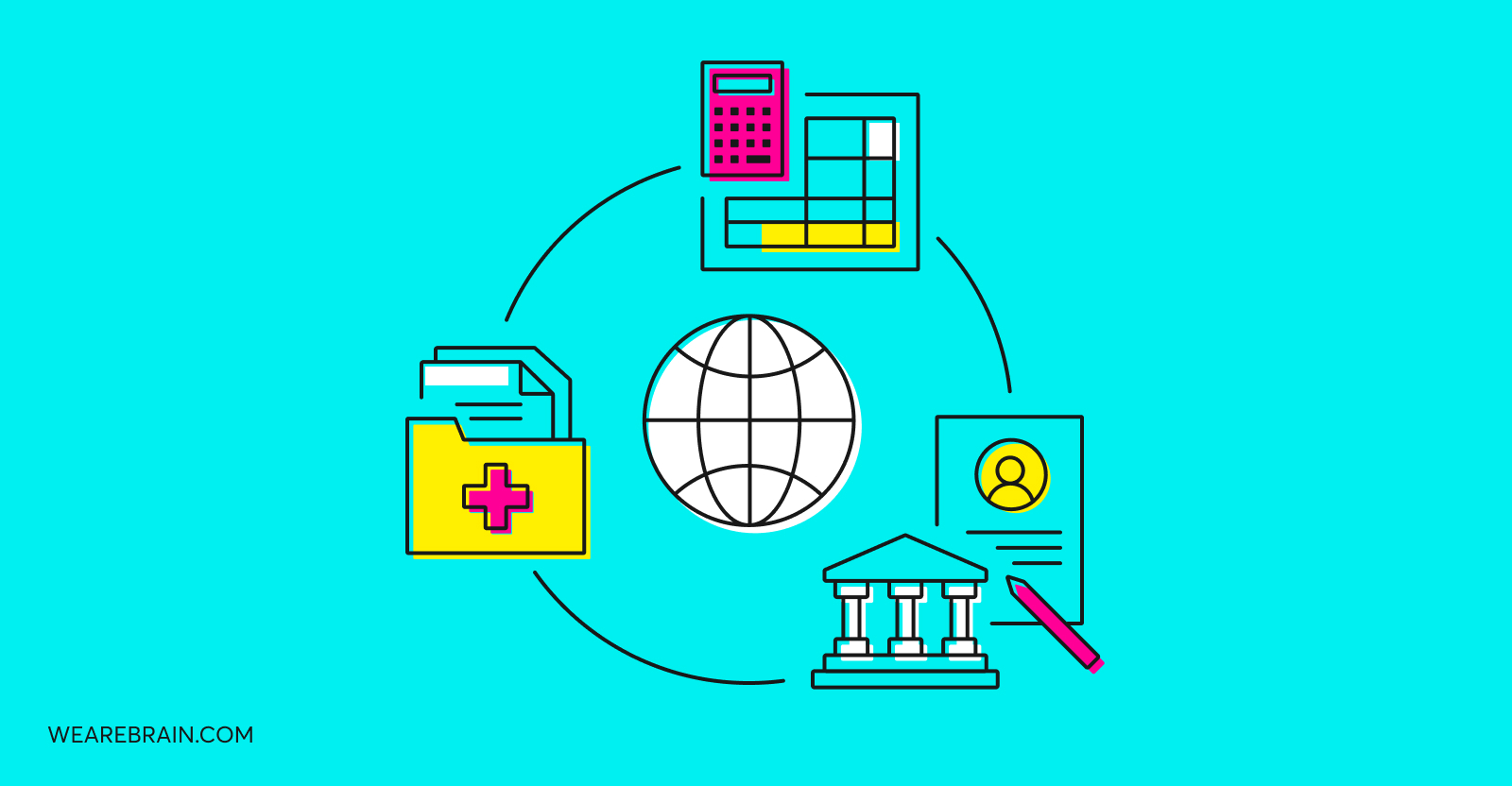Digitisation of public services in Europe

Last month, the European Commission put forward their plans for widespread adoption of digital transformation initiatives across all EU Member states by 2030, referring to it as Europe’s Digital Decade. The aim is for the EU to become digitally sovereign in an open and connected world, and “to pursue digital policies that empower people and businesses to seize a human-centred, sustainable and more prosperous digital future”.
To translate the Commission’s digital transformation ambitions, they have outlined a ‘Digital Compass’ action-plan revolving around 4 cardinal points to achieve the following:
- Digitally skilled citizens and highly skilled digital professionals
- Secure, performant and sustainable digital infrastructures
- Digital transformation of businesses
- Digitalisation of public services
In this article, we will outline possible ways the Commission might achieve its goals, with particular focus on how it might plan to digitise public services.
Benefits of digitised public services
Many people don’t see why public services should be more complicated than online shopping. This tangible drive toward continental digitisation as a natural progression of the global information landscape is thus inevitable, and plans are already in place to reach these targets by the end of the decade. The pros of digital transformation in any process-management system (including business and government) are overwhelming and well-documented, which is why global governments need to roll out the digitisation of public services on a national scale.
Having government services operate completely online has numerous benefits:
- The lack of physical offices saves money and is always-on/available 24/7, making it perfect in times of crises such as a pandemic where processes don’t need to be halted or shut down
- Moving digital processes online saves time for both companies and people (it’s easier and faster) and frees up time for complex tasks
- Governments can leverage Big Data to use predictive modelling to identify trends and relationships between variables related to different social problems
- Citizens will have access to their e-medical records
- Citizens will be able to use a digital ID to assist with streamlining digital forms and documents
For these reasons and more, it is imperative that public services stay up-to-date with the latest technology to improve service delivery for citizens.
So, how can governments move towards the ultimate digitisation of public services?
Infrastructure
In order to meet the demands of Europe’s continental digital transformation, digital infrastructure requirements need to be addressed and implemented across the board. If digital transformation is to occur, then all players need to be up to the task of getting on board. For government agencies and all citizens to adopt digitisation processes, a scalable IT infrastructure to allow it to happen needs to be developed first. This means infrastructure development of 5G, cloud computing, edge computing, and AI needs to be coordinated and injected into all corners of the continent. Thankfully, the process is already underway.
According to McKinsey, governments should focus on the user experience to increase widespread adoption: “Governments can provide a seamless user experience by consolidating digital channels. Instead of visiting multiple websites or apps, people could navigate and access information and services based on life or business situations in one place (which also makes web searches easier). Using the same solution for recurring service transactions, such as identification or payment, helps users become familiar with the process and promotes broad adoption of the required devices or apps. Moreover, a coherent look and feel across the public services landscape can increase trust in the government’s digital brand.”
5G
The ongoing rollout of 5G networks and infrastructure across Europe planned throughout the Digital Decade will play a crucial role in allowing the European Commission’s plans to be realised. There has been much hype and anticipation regarding the impact 5G will have on our lives, and this decade will see significant evolution of our digital capabilities thanks to the unprecedented speed of 5G. This technology will allow for more devices to be connected and more information and data to be received and transmitted, creating a larger and faster information highway that can benefit all sectors (private, public, and government) no matter their size. When 5G is adopted by government services and together with most citizens, we will begin to see the impact of fast accessibility to enable the digitisation of public services.
Cloud
The global move to cloud infrastructure is gathering momentum on a wider adoption scale. It allows for businesses and governments to host their data in clouds rather than servers, dramatically reducing speeds, increasing storage capacity, and making access of information from anywhere in the world faster and simpler. For governments to completely digitise public services requires that all public service departments transition to cloud-based infrastructure in order to communicate better with each other. The aim is to centralise all important data and information for easy access across departments. This makes accessing information easier not only for government agencies but for citizens as well. A drive to get all government agencies on cloud infrastructure is crucial for the EU’s plans for its Digital Decade.
Buy-in and challenges
In order for Europe’s Digital Decade to come to fruition and make its anticipated impact, it requires widespread cooperation, coordination, and buy-in from key players: including governments and the private sector. Both sectors need to align their digitisation strategies to a common goal: ultimate digital transformation.
Privacy is a large challenge when it comes to the Commission’s plans for a ‘digital decade’. Global citizens are becoming increasingly concerned about their data security and privacy being mismanaged. With most citizens’ private information becoming digitised, the need for a robust, independent cybersecurity plan and infrastructure needs to be established to gain the trust and support of all citizens.
Of course, an initiative on this scale involving thousands of public servants from different cultures and diverging interests and no clear hierarchical order has its share of challenges. The vast scope and enormous number of services needing to be digitised, limited capabilities in technology and agile ways of working, no formal way to glean input from the public, and the need to build broad support from civil servants, politicians, and the public are big mountains to climb.
But McKinsey insists a program management blueprint for large-scale digitisation already exists. This includes the following steps:
- Create a common vision and keep it alive over time
- Establish an efficient division of labour
- Get the most out of digital talent, and train skills on the job
- Make user outcomes transparent and establish corresponding incentives
- Communicate progress frequently and in a tangible way
With these agile project management outlines implemented on a state-wide level, the European Commission can oversee the digital transformation process in real-time. A massive collective effort is required, and the above outline is a starting point to get the digital ball rolling.
Summary
It is no secret that the global disruption of COVID-19 has forced businesses to digitise their processes much faster. Ursula von der Leyen, president of the European Commission, recently acknowledged that “..the pandemic has exposed how crucial digital technologies and skills are to work, study and engage – and where we need to get better.”
Working together with governments, business and service providers can deliver technology across all demographics to ensure easier, safer, and faster access to public services. The day where a citizen is able to access their own e-health records as easily as they can purchase an item online is fast approaching. With an entire continent in the process of digitally transforming, we are one step closer to the possibility of a digitally interconnected global society.
Mario Grunitz
Working Machines
An executive’s guide to AI and Intelligent Automation. Working Machines takes a look at how the renewed vigour for the development of Artificial Intelligence and Intelligent Automation technology has begun to change how businesses operate.







